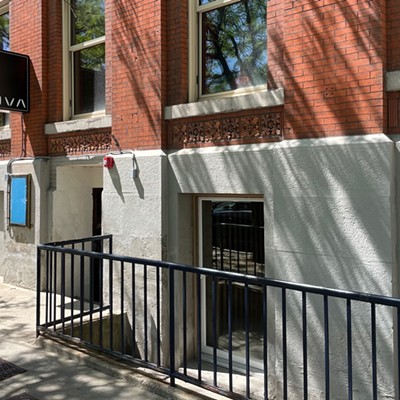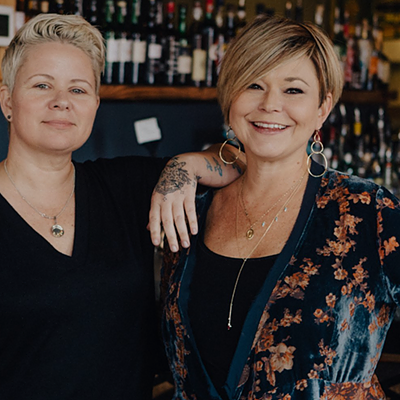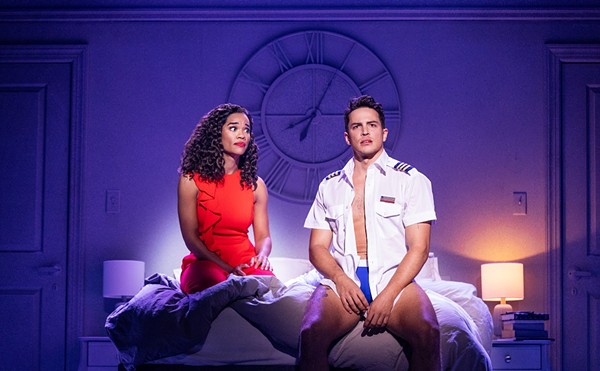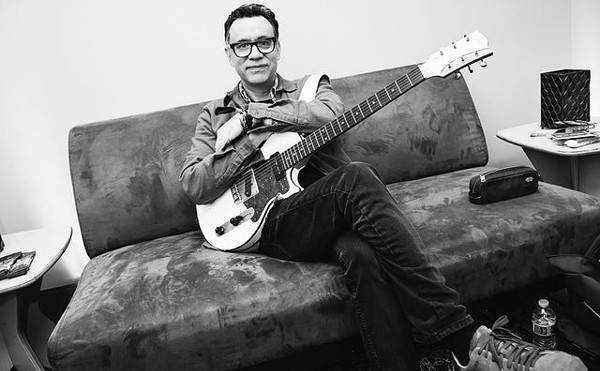My doctor sat back, his ophthalmoscope blinking off as the room lights came up. "You've got a little cataract developing in your right eye."
He was smiling a little too broadly, even for a doctor with an office in Beachwood, and it seemed like he said, "cute little cataract." I wasn't pleased. My mother had been in her 70s when she was diagnosed with this condition, but apparently I was to be deprived of the normal pace of decrepitude. I was 54, hanging on to my so-called health in a death grip of denial. For several years I'd had no medical insurance, so the first question that came to mind that day wasn't about blindness or mortality; I wondered if I could find a way to pay for the inevitable "procedure."
No one welcomes any kind of vision impairment, but if I felt slightly persecuted, it was because I already had another, imperfectly understood major eye disease - glaucoma - for which I'd been taking daily medication for 14 years. But I wasn't being singled out by fate. There was nothing especially unusual about any of it. As I learned later, cataracts are caused by a disordering and clumping of proteins called crystallins - an occurrence common enough even among people in their 40s - which, along with water, make up the basic substance of the eye's lens. According to the National Eye Institute's website, 50 percent of Americans between 55 and 64 will develop cataracts within 10 years. And like me, many of them also have glaucoma.
Some cataracts remain inconsequential, never seriously impacting function. But not mine. Two years later, in late 2006, I began to notice the dimming and blurring of my now Claude Monet-like days. This was just as advertised. Being a painter and writer about the arts, I necessarily find many things ironic, more or less as a matter of professional practice. But this was the first time I'd had a medical condition that was often described - in pamphlets, on medical websites - in terms of art history. Over and over again I read that I would experience an "Impressionist" effect. Glum, I reflected that it could be worse. An Expressionist, or even a Cubist eye disease would be challenging indeed, while really up-to-date, postmodern maladies might well be incurable. Anyway, I had to admit the Victorian tropes were apt, even comforting, like a good ghost story. Eventually my world began to resemble a badly abused Renoir or maybe one of the American Impressionist George Inness' dusky landscapes. I settled into the early 1880s like a warm, dark bath, and waited.
This sense of an encroaching crepuscular tide had its drawbacks. It was harder to see during the day, but nights soon became a dangerous farce. By December 2007 I couldn't drive anywhere after dark unless I was already familiar with the territory. I knew the end was at hand one evening when it took me an hour to make a 10-minute drive to a dinner party because I couldn't read the street signs. At every intersection I pulled over, balancing in a snowdrift as I squinted up at elusive black lettering. About a week later, when a friend needed a ride home from the Akron-Canton airport, I hopped optimistically into the car and was soon hopelessly lost, unable to make out even the huge green and white interstate exit signs. I had become Mr. Magoo.
There are three kinds of cataracts: nuclear, in the center of the lens; cortical, extending in a spoke-like manner from the outside of the lens to the center; and subcapsular, gathering at the back. I had all of these distributed over both eyes, like a diagram of cloud formations in Weather for Dummies.
I was still painting and still writing critiques on a weekly basis. I squinted a lot, and no doubt I missed a lot. My near vision was pretty good, but I couldn't recognize my own children, or my own paintings, across the room. And unknown to me, there was another problem. If I had read farther down the page on the NEI site, I would have discovered that color perception is altered by thickening cataracts. Things literally turn brown - not so much like an Impressionist painting, but like a Rembrandt or the Sistine Chapel before it was restored. I was seeing the world through a couple of layers of dirty varnish. I now believe that during this period, the brownness and its source had become one of the hidden subjects of my work.
Ten years before, sometime in the 1990s, I began to consider ways in which art was an expression of the state of the artist's body. This could be deliberate, but in my case and as I believe with expressive painting in general, the process tends to be unconscious. For me it can be a very literal proposition. For instance, my use of tar and related materials, either as primary media or as an undercoat bleeding up through layers of color, had a lot to do with smoking. I finally quit in 2004, but not before considerable damage was done. It isn't that I had set out to paint the inside of my lungs or arteries or the spreading boundaries of my enlarged heart. Not that I actually did so, but I believe these dark works - where one seems to encounter a figure as if by touch and surmise, in a room lit only by stars - reflect deep-seated fears and intuitions about behavior and process. Painting is, after all, a very physical, almost athletic activity, composing a record of gestures that transcribes far more than the artist intends.
I should have known something was up in late 2007 when I began pouring puddles of white paint on the canvas, letting it dry and crack, then sometimes turning the result into a representation of clouds or storms: These were pictures, almost sculptures, of cataracts.
A different ophthalmologist affiliated with another hospital finally performed the surgery, which involves both laser and scalpel. The old lens is emulsified and removed, then promptly replaced with a spanking new, absolutely clear intraocular lens. The right eye came first in early June, and the left followed about a month later. The procedure took roughly 40 minutes each time; the results were rapid and spectacular. I was ushered into the present - a place almost unbearably bright, like a laundry-detergent commercial, with whiter whites, redder reds, and bluer blues. I suppose I'll get used to it. But I'll be watching my colorful new paintings for further signs of trouble. What would a painting of a prostate malignancy look like?











